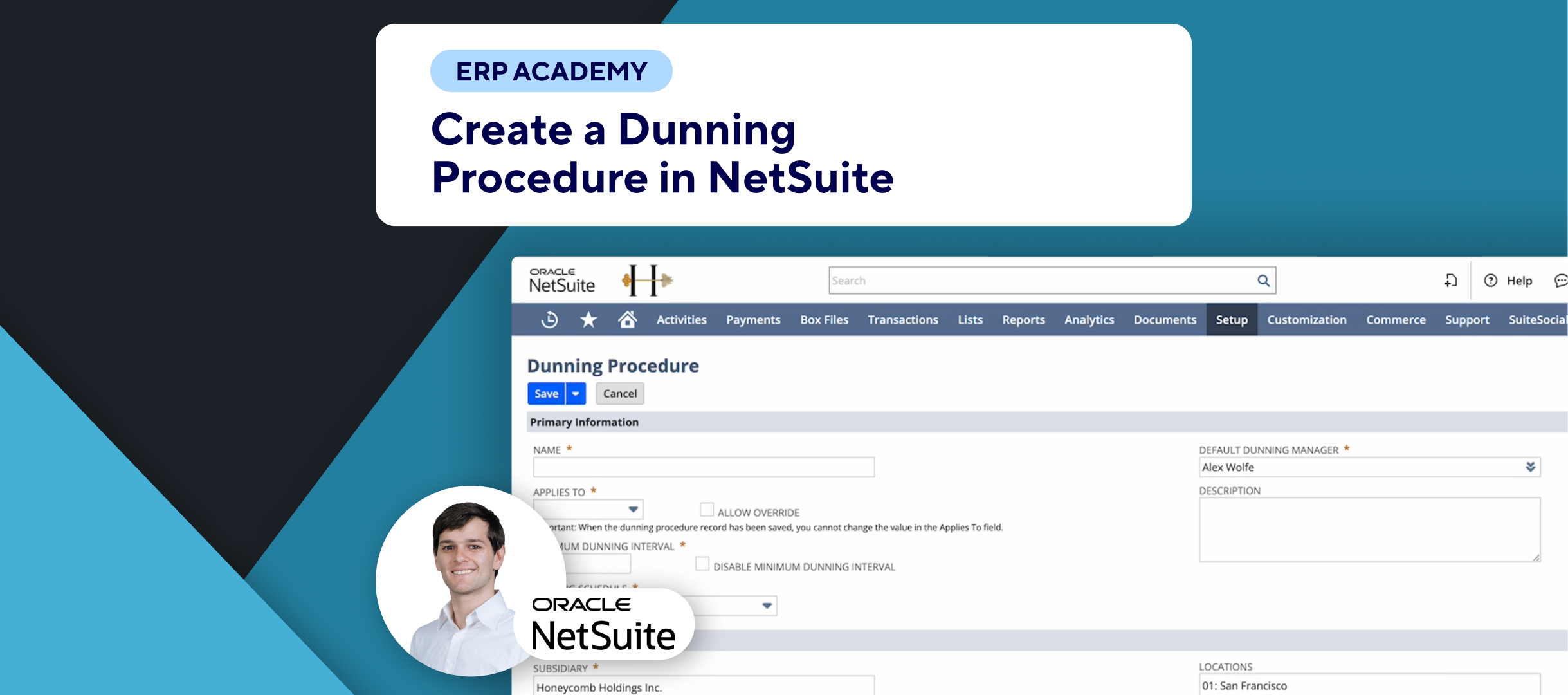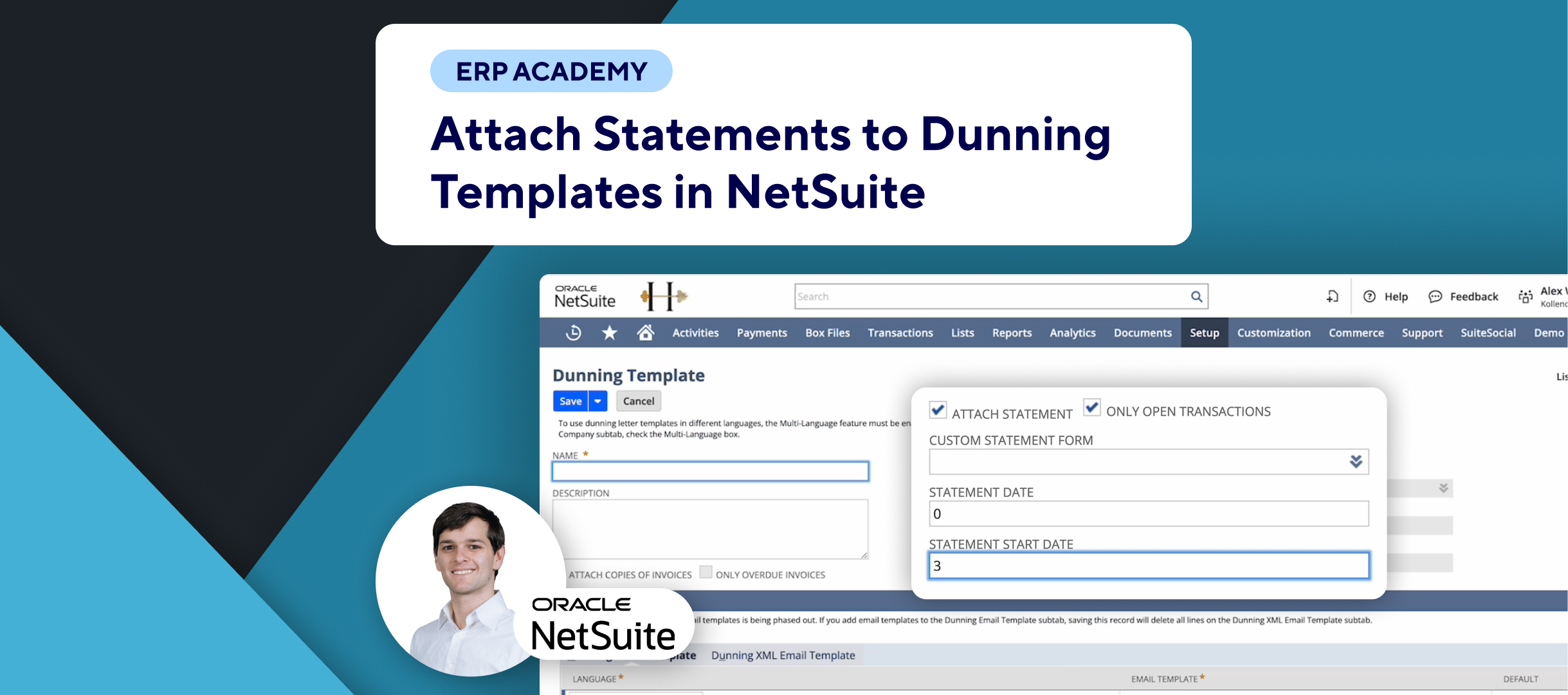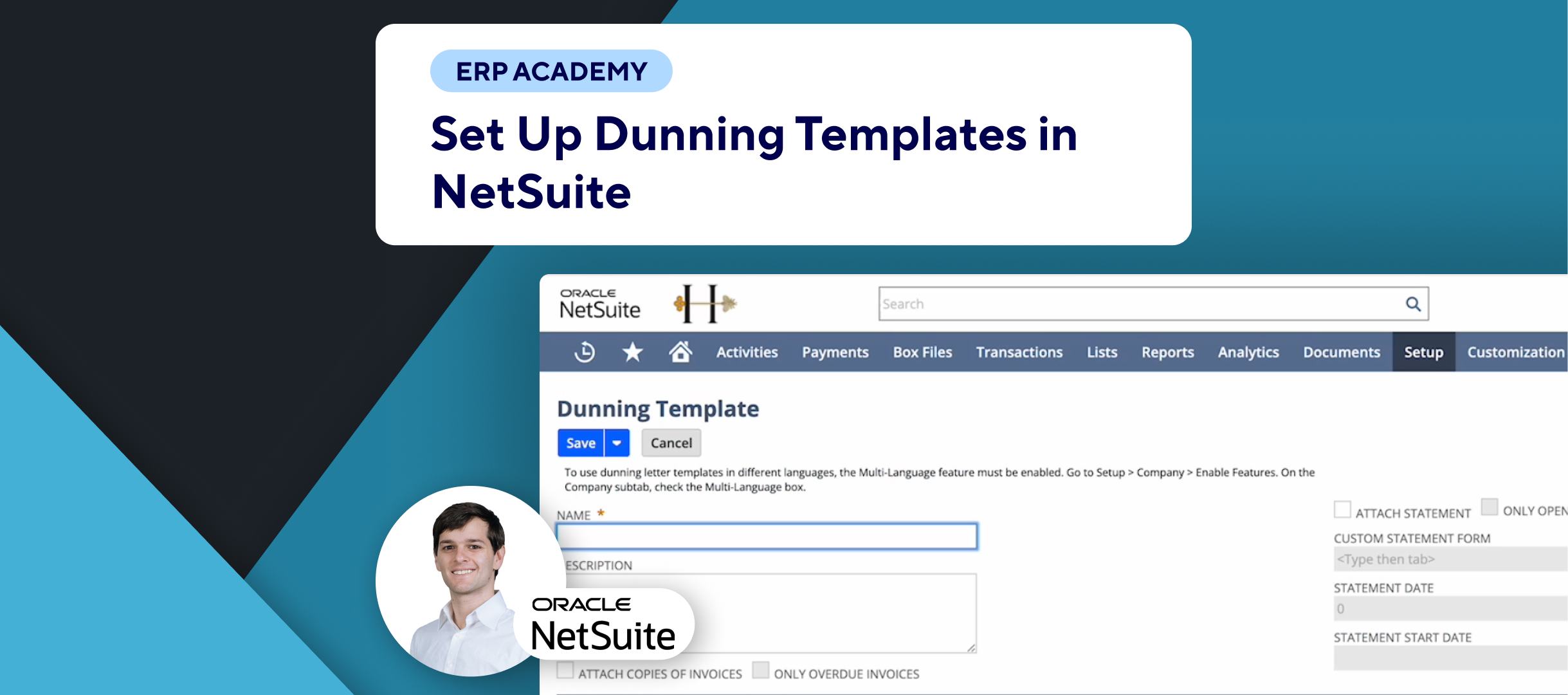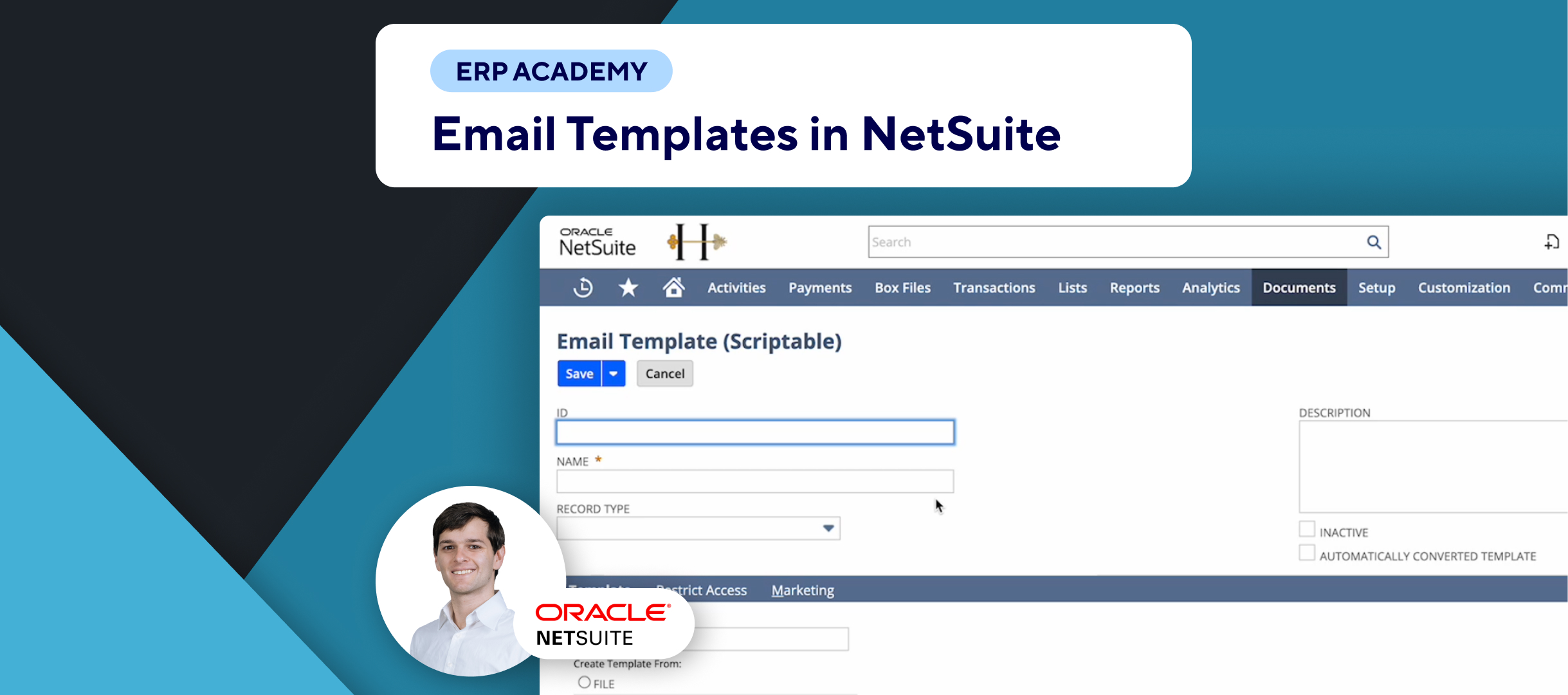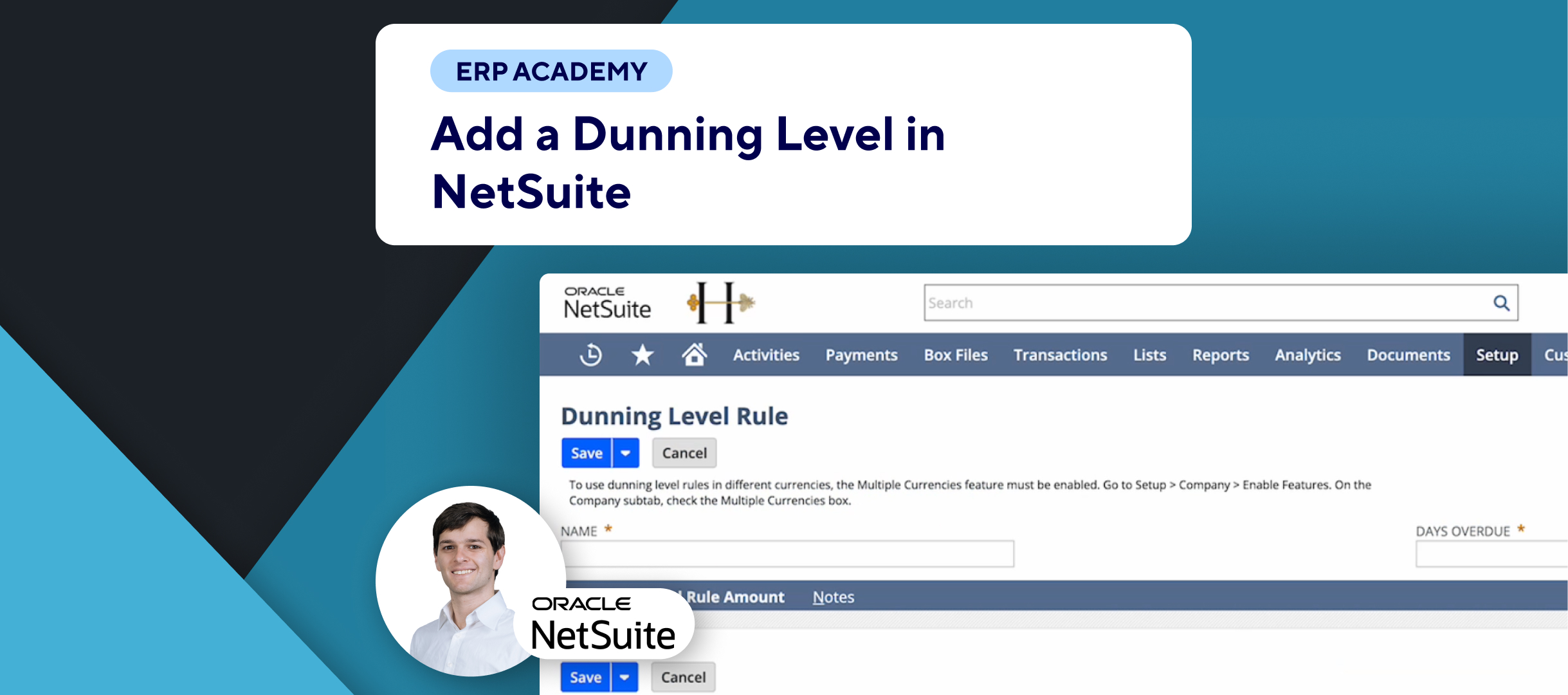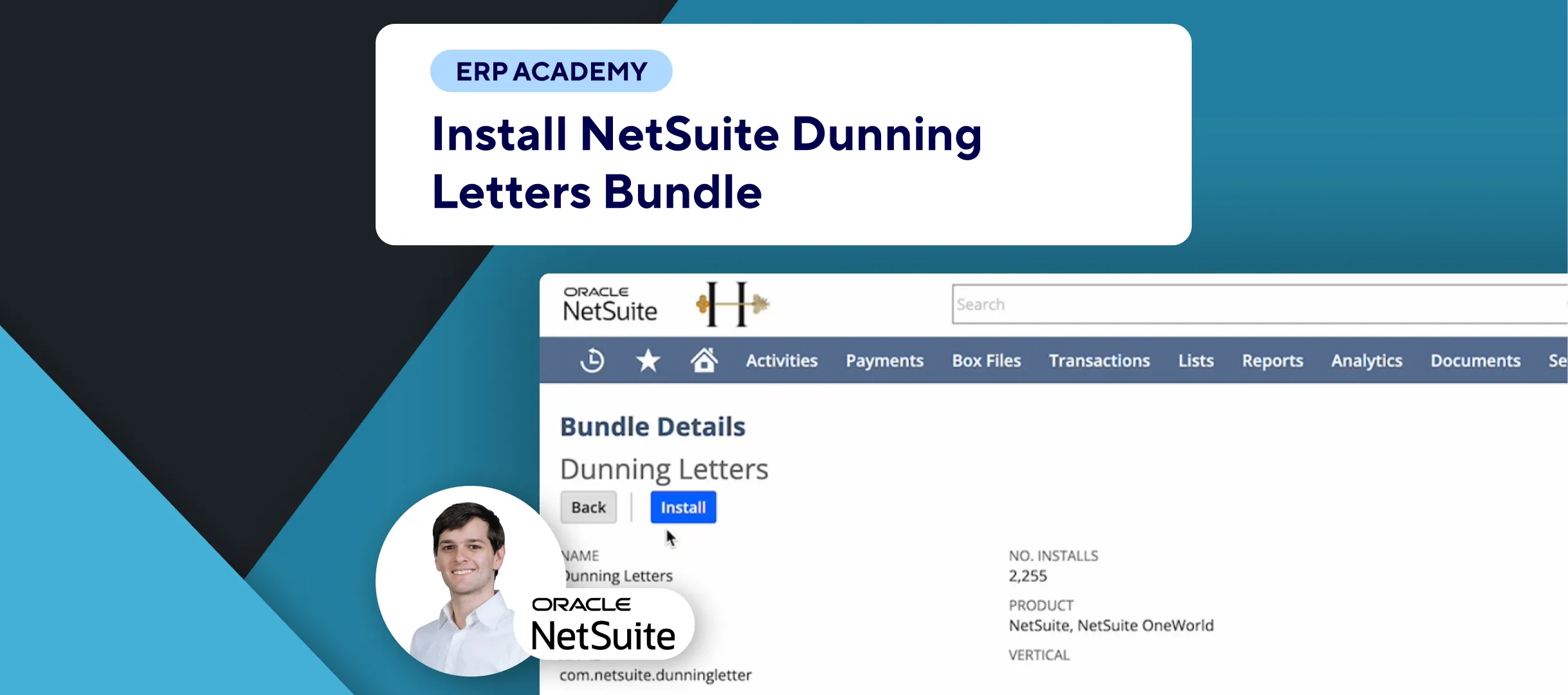In the previous video, I created a dunning procedure and promised to dive deeper into the selection criteria. Today, we’ll explore how to set up these criteria, which determine which customer invoices and invoice groups are assigned a specific dunning procedure.
Understanding Dunning Selection Criteria
The dunning selection criteria for automatic assignments work differently depending on the type of dunning object it applies to:
- New Invoices: Assigned based on subsidiary, department, location, class, saved search, and procedure priority.
- New Customers: Assigned based on subsidiary, saved search, and procedure priority.
- New Invoice Groups: Assigned based on subsidiary, saved search, and procedure priority.
Steps to Set Up Dunning Selection Criteria
- Navigate to Dunning Procedure Setup:
- Go to: Setup > Dunning > Dunning Procedure > Edit (your specific dunning procedure).
- Select Subsidiary:
- Choose the subsidiaries to which this procedure should apply. If using OneWorld, at least one subsidiary must be selected.
- Select Department, Location, and Class:
- These options appear only if you have the appropriate features enabled and if the dunning procedure applies to invoices or invoice groups.
- Ensure that these classifications are set on the main invoice record, not just individual line items.
- Use Saved Searches (Optional):
- Set up saved searches relevant to your dunning criteria.
- If you choose “Customer” in the “Applies To” field, the saved search will target customers.
- For invoices, the saved search will target invoices.
- For invoice groups, it targets the entire group.
- Assigning Dunning Procedure:
- Invoices: Assignments can include departments, locations, and classes.
- Customers and Invoice Groups: Assignments focus more on subsidiary and saved search criteria.
Practical Example
- Scenario 1: Applying to Invoices
- Subsidiary: US Subsidiary
- Department: Sales
- Location: New York
- Class: Retail
- Scenario 2: Applying to Customers
- Subsidiary: Global
- Saved Search: High-Value Customers
Conclusion
Setting up the correct selection criteria ensures that your dunning procedures are applied accurately and efficiently. Play around with different options, try various configurations, and see what works best for your organization.

